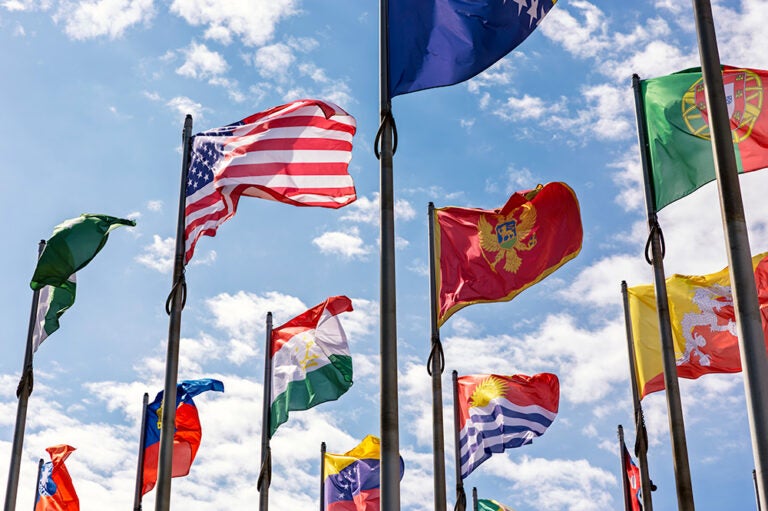Child poverty remains prevalent in the United States — the supplemental poverty measure (SPM), which accounts for many federal programs designed to assist low-income families, slightly increased over the past year for Americans under the age of 18. Moreover, those rates are higher than other wealthy nations. Such trends are concerning, as evidence suggests that child poverty not only has long-lasting effects on health and education, but also has quantifiable economic costs.
While the federal government also publishes information on the official poverty measure, which considers pretax money income alone, this analysis uses the SPM in order to capture changes to tax policy, noncash assistance, and shifts in necessary expenses over the years.
Child Poverty Remains a Structural Challenge in America
Child poverty has remained relatively high in the United States for much of the past decade, with the SPM averaging 16.1 percent from 2010 to 2019. During the COVID-19 pandemic, however, policymakers enacted legislation with a number of elements that helped children, including stimulus checks, enhanced Earned Income and Child Tax Credits, and increased benefits for the Supplemental Nutrition Assistance Program. That assistance was largely responsible for a subsequent decline in child poverty, which fell from 12.6 percent in 2019 to 9.7 percent in 2020, and then to 5.2 percent in 2021.
However, when the COVID-19 relief and targeted tax benefits expired in 2022, there was a significant spike in the SPM, reaching 12.4 that year. The poverty rate continued to rise in 2023, to 13.7 percent, partially due to the amount of resources a family needs in order to be considered above the poverty line. Child poverty is now above the pre-pandemic level of 12.6 percent in 2019.
Child poverty also exceeded the poverty rate of adults in the United States — the poverty rate in 2023 was one percentage point higher for children compared with those 18 years or older. Prior to the COVID-19 pandemic, child poverty was also above that of the adult population. Compared with the 2010 to 2019 average poverty rate of 16.1 percent for children, the average poverty rate for those 18 years or older was 14.1 percent over that same decade. Child poverty then dipped below the rate for adults during the pandemic due to targeted federal assistance for children. However, the expiration of that aid caused child poverty to rise above the rate for adults, returning to the pre-pandemic narrative. Generally, children experience higher rates of poverty than adults in the United States because of factors such as the cost of caregiving and its responsibilities, transitions to a single parenthood household, unemployment of parents, and disabilities of family members.
Child Poverty is Higher in the United States than in Other Wealthy Countries
Not only does the rate of U.S. child poverty fare poorly when compared to the poverty rate of U.S. adults, but it also compares poorly to child poverty rates of peer countries. The United States has the highest rate of child poverty compared to other wealthy, developed nations, according to the most recent data from the Organization for Economic Co-Operation and Development (OECD). The U.S. child poverty rate was 20.8 percent, and the average for similar countries excluding the United States was 11.2 percent using data from 2022 (or the most recent data available for a country). Belgium’s last recorded data was from 2021 and was the lowest rate in the comparison group at 7.9 percent. While OECD’s methodology for the child poverty rate is different from the SPM, it also accounts for governmental taxes and transfers.
The Economic Costs of Child Poverty
High levels of child poverty can impose a substantial economic cost to the United States. In 2018, a study by Michael McLaughlin and Mark R. Rank of Washington University in St. Louis measured the economic cost of child poverty by quantifying the costs of lower economic productivity, higher healthcare costs, and costs associated with crime, homelessness, and child maltreatment. The authors acknowledge that other important costs exist — such as emotional harm to children — but they are not easily quantifiable.
The largest economic cost of child poverty is the reduced future earning potential of children born into poverty. For adults who experienced poverty during childhood, earnings were reduced by a total of $294 billion compared to adults who did not experience poverty during childhood in 2015. The next largest costs are related to street crime and poor health. In all, child poverty reduced the size of the economy by an estimated $1 trillion, or 5.4 percent of gross domestic product, in 2015.
For each dollar spent to reduce poverty, McLaughlin and Rank estimated the government saves at least $7 on the future economic costs of poverty — making it a worthwhile investment from purely a budgeting standpoint.
Conclusion
Child poverty remains a significant structural problem in the United States, proven by the SPM’s rise in the past two years. In the longer term, a better understanding of the economic effects of child poverty can help policymakers make informed decisions about the most efficient use of federal dollars for anti-poverty programs and initiatives.
Image credit: Photo by Spencer Platt/Getty Images
Further Reading
The Fed Reduced the Short-Term Rate Again, but Interest Costs Remain High
High interest rates on U.S. Treasury securities increase the federal government’s borrowing costs.
What Types of Securities Does the Treasury Issue?
Let’s take a closer look at a few key characteristics of Treasury borrowing that can affect its budgetary cost.
Experts Identify Lessons from History for America Today
A distinguished group of experts to evaluate America’s current fiscal landscape with an historical perspective.


